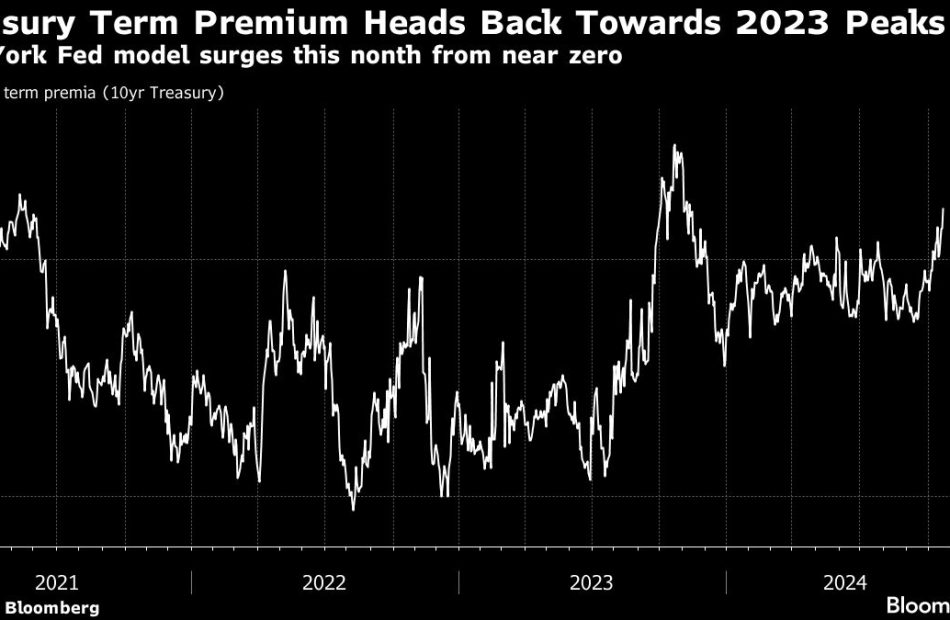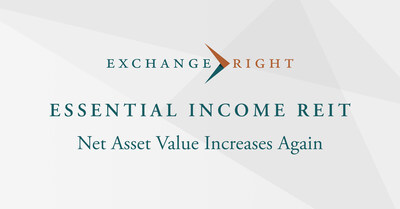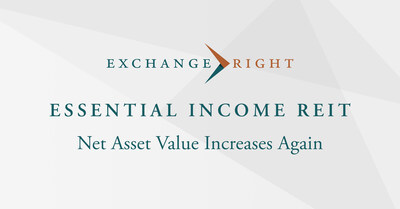Market Digest: CMA, DGX, NEE, RF, SAP, GM
Summary
Sector Breadth a Positive Heading into Year-End The S&P 500 closed on October 18, logging its sixth consecutive winning week. During that mid-October week, the three major averages – the S&P 500, the Dow Jones Industrial Average, and the Nasdaq Composite – all set new all-time highs. That’s a rare example of the blue-chip index, the broad market, and growth stocks all moving in concert. One reason the major indices are moving broadly in lockstep follows from analysis of S&P sector performance. The growth leadership that characterized most of 2023 and the 2024 first half gave way to non-traditional leaders in 3Q24; these included rate-sensitive, cyclical, and defensive sectors. All but one sector was positive in 3Q24, but the various sectors had highly varied performances. The tag-team approach to sector leadership across the nine months has contributed to well-balanced year-to-date performance. All sectors are positive for 2024, and all but one sector was up in double-digit percentages for the year to date as of 9/30/24. Sector Performance for 1H24 In the first quarter of 2024, investors saw signs that leadership in the market might be shifting. During the quarter, the S&P 500 delivered capital appreciation of 10.2%. Five sectors either outperformed the broad market or finished within a percentage point of the S&P 500. Two were the traditional growth leaders: Communication Services finished up 11.9%, and the Information Technology sector appreciated 10.0%. The best two sectors, however, were not the traditional leaders. Energy and Financial both finished on March 31 with 12.0% gains. Another sector, Industrial, was a tick behind Financial, with a 9.9% gain. Healthcare and Materials both had solid third quarters, with gains of about 8% and 7%, respectively. In a sign of things to come, Utilities – out of favor particularly during the Fed’s rate-hiking campaign of 2022-2023 – logged a roughly 6% first-quarter gain. Stock sectors with above-market income tend to outperform the broad market in periods of declining interest rates. Although the Fed stood pat during 1Q24, the market was already buzzing about the potential for rate cuts later in the year. The only negative sector in the quarter was Real Estate, down 3%. While Utility stocks tend to move in lockstep, Real Estate equities in different niches are subject to different cyclical and secular forces, such as the pandemic-driven collapse in commercial office occupancy. In the second quarter of 2024, the broad market advance was much more subdued, with the S&P 500 rising less than 4% after its 10%-plus surge in 1Q24. Growth leadership reasserted itself in the second quarter. With buzzwords like ‘Mag 7’ and ‘Gen AI’ resonating in the background, Information Technology led the market with an 11.4% gain. Communication Services also topped the broad market with a 4.9% gain. While growth was back, the shift toward beneficiaries of declining interest rates further accelerated as the likelihood of the first Fed rate cut drew nearer. The Utility sector appreciated 4% in 2024. Possibly because of those secular factors cited above, Real Estate continued to struggle and declined about 2% in the quarter. Multiple other sectors were negative in 2Q24, including Industrial and Materials (both down about 5%), Energy (down 3%), and Financial and Healthcare (both down about 1%). For the full first half of 2024, growth sectors won; but participation widened across the broad market, and only one sector (Real Estate) was down. In the first half of 2024, the S&P 500 appreciated 14.5%. Just two sectors did better than the market in the first half: Information Technology, up 22.6%; and Communication Services, up 17.4%. The two other double-digit winners in the first half were Financial, up 11%; and Utilities, up about 10%. The paired leadership of the third- and fourth-place sectors may seem counter-intuitive. If rates are about to come down, wouldn’t that hurt net interest margins at banks? While that is true, banks have many other fee-based businesses, including investment banking, capital markets financing, and consumer loans, that benefit in a declining rate environment. Besides the negative showing from Real Estate, five other sectors posted single-digit gains in 1H24: Energy (up 9%), Healthcare (up 7%), Consumer Staples (up 6%), Industrials (up 4%), and Materials (up 1%). Those latter two sectors are at least partly sensitive to demand from China, which as of mid-year remained mired in its slump. Sector Performance for 3Q24 Investors at mid-year 2024, assessing the clear growth leadership at the sector level, may have thought that 2024 would shape up as a replay of 2023: a narrowly led market defined by AI fever. Instead, non-traditional sectors grabbed the leadership reins in 3Q24. Why did the market pivot away from growth and toward defensive, rate-sensitive, and cyclical in 3Q24? Seasoned investors always want to take money off the table before some kind of sentiment shift turns paper profits into a wisp of smoke. That explains the rotation away from growth. As for the rotation toward other sectors, signs that China was becoming serious about stimulating its economy stirred interest in the commodities complex, as did the worsening situation in the Middle East. And midway through September, the Federal Reserve cut interest rates for the first time in over four years. In the third quarter of 2024, the broad market advanced 7.4%, splitting the difference between first- and second-quarter gains. With the first Fed rate cuts no longer imminent but now a reality, momentum shifted clearly to income sectors. Real Estate made up for its late start and led the S&P 500 in 3Q24 with a 17.2% gain. Just behind was Utilities with a 16.1% gain. The growth leaders of 2023 participated in the 3Q advance, but Information Technology was at the back of the pack. The sector advanced less than 1% in 3Q24. Communication Services rose a rounded 6%, which was close to mid-pack. The other growth sector from 2023, Consumer Discretionary, surged 10% in 3Q24 after being up just 2% at mid-year. Plainly, sentiment toward the sector has improved on the belief that lower rates will help sales of homes and vehicles going forward. Financial was next in line, rallying 9% on hopes for continued progress in fee-based revenues. Two traditional defensive sectors, Consumer Staples and Healthcare, logged 3Q gains of 8% and 6%, respectively. Materials rose 7%, with much of the gain back-weighted to September following news of China’s stimulus plan. The lone negative sector in 3Q24 was Energy, which dropped 4%. Energy stocks rallied in the first half partly on expectations that the worsening situation in the Middle East, along with hurricanes in the Gulf of Mexico, would push up oil prices. But benchmark NYMEX crude finished 3Q24 at $67 per barrel, down from $81 at mid-year. Sector Performance for 2024 Year to Date As of 9/30/24, the S&P 500 was up 20.8% on a capital-appreciation basis and up 22.1% on a total-return basis (assuming reinvestment
Upgrade to begin using premium research reports and get so much more.
Exclusive reports, detailed company profiles, and best-in-class trade insights to take your portfolio to the next level
Steering Shaft Market Projected to Grow at 3.3% CAGR, Reaching $7.9 Billion by 2033 | Fact.MR report
Rockville, MD, Oct. 24, 2024 (GLOBE NEWSWIRE) — According to Fact.MR, a market research and competitive intelligence provider, the global steering shaft market is estimated to be valued at US$ 5.7 Billion in 2023 and is expected to expand at a CAGR of 3.3% during the forecast period.
With the implementation of stricter safety regulations and standards, automakers are now required to install advanced safety features in their vehicles, including the steering system. This has led to an increased demand for high-quality steering shafts that can meet these new safety standards. In addition, the implementation of new safety regulations and standards has also led to increased competition among manufacturers, which has led to innovation and the development of new technologies.
On the back of continuous technological innovations coupled with rising awareness about environmental safety, rising consumer inclination towards electrical vehicles is observed over recent years. As the penetration of EVs continues to grow, the demand for these specialized steering shafts is expected to increase, subsequently creating numerous growth opportunities for players in the steering shaft market over the forecast period.
By region, Asia Pacific is expected to witness significant growth in the steering shaft market, due to increasing demand for commercial and passenger vehicles in countries such as China and India. The region is also home to some of the leading automotive component manufacturers, which has further fuelled the growth of the steering shaft market.
For More Insights into the Market, Request a Sample of this Report: https://www.factmr.com/connectus/sample?flag=S&rep_id=5648

Key Takeaways from Market Study
- The global steering shaft market is projected to expand at a CAGR of 3% and be valued at US$ 7.9 Billion by 2033.
- The market sales declined at -3.5% CAGR for the historic period of 2018-2022.
- China is expected to dominate the market share in East Asia by likely accounting for 2% of its market share in 2023.
- Electronic Power Steering (EPS) by mechanism is likely to represent 6% market share in 2023.
- Splined steering shaft by steering shaft style is predicted to dominate the market and is estimated to be valued at US$ 7 Billion in 2023.
- Sales of steering shaft through OEMs is predicted to have a market valuation of US$ 7.4 Billion in 2023.
“Nearly 95% of Passenger Vehicles are Equipped with Electric Power Steering Systems leading to Higher Market Growth” says a Fact.MR analyst.
Leading Players Driving Innovation in the Steering Shaft Market:
Key industry participants like Changshu City Jinhua Machinery Co., Ltd, China Automotive Systems, Inc., Faw Koyo Steering Systems Co., Ltd., Global Steering Systems, JTEKT Corporation, KLM Performance, Nexteer Automotive, NSK Ltd., Pailton Engineering, Robert Bosch GmbH, Steering Shaft Factory and Zhejiang Shibao Co., Ltd., etc. are driving the steering shaft industry.
Market Development
- The steering shaft manufacturers are investing in the research and development of new technologies that can enhance the performance and durability of their products. They are looking for ways to improve the design and manufacturing processes to make the steering shafts more lightweight, durable, and efficient.
- For instance, in January 2023, Pailton Engineering, a steering system manufacturer announced that the company will design and build a new steering column for lightweight delivery vehicles. The development of the new steering column is attributed to the industry demand for lightweight vehicles, as manufacturers are attempting to reduce the load on delivery vehicles, especially electric vans made for last-mile deliveries.
Steering Shaft Industry News:
- For example, in October 2021, Nexteer Automotive expanded its Electric Power Steering (EPS) portfolio with the introduction of the Modular Column-Assist EPS System (mCEPS). This new system features a cost-effective, modular platform design that offers scalability for Nexteer and the flexibility to accommodate the needs of various OEMs.
Get Customization on this Report for Specific Research Solutions:
https://www.factmr.com/connectus/sample?flag=S&rep_id=5648
More Valuable Insights on Offer
Fact.MR, in its new offering, presents an unbiased analysis of the global steering shaft market, presenting historical market data (2018-2022) and forecast statistics for the period of 2023-2033.
The study reveals essential insights based on steering shaft style (splined, double D, smooth), mechanism (HPS -hydraulic power steering, EPS- electronic power steering, EPHS – electric power hydraulic steering), material (steel (polish stainless steel, stainless steel, steel), aluminium), sales channel (OEM, aftermarket), vehicle category (passenger vehicle (compact, mid-size, luxury SUVs), commercial vehicle (LCV, HCV, coaches & buses)) across major regions of the world (North America, Latin America, Europe, East Asia, South Asia & Oceania, and Middle East & Africa).
Check out More Related Studies Published by Fact.MR Research:
Automotive steering system market is expected to surpass a CAGR of 4% in the 2021-2031 assessment period, reaching nearly US$ 34 Billion.
Marine shaft power meter market increased at 3.7% CAGR and reached a value of US$ 491.17 million in 2022. The market is predicted to advance at a CAGR of 3.6% and reach US$ 724.75 million by the end of 2033.
Automotive whiplash protection system market is estimated at USD 2.6 Billion in 2022 and is forecast to surpass USD 5.2 Billion by 2032, growing at a CAGR of 7.2% from 2022 to 2032.
Automotive lighting market is set to enjoy a valuation of US$ 36.8 billion in 2022 and further expand at a CAGR of 6.4% to reach US$ 68.2 billion by the end of 2032.
Sales of automotive multifunction switches is estimated at US$ 3.94 billion in 2024 and has been analyzed by Fact.MR to increase at a CAGR of 4.2% and reach US$ 5.91 billion by 2034.
About Us:
Fact.MR is a distinguished market research company renowned for its comprehensive market reports and invaluable business insights. As a prominent player in business intelligence, we deliver deep analysis, uncovering market trends, growth paths, and competitive landscapes. Renowned for its commitment to accuracy and reliability, we empower businesses with crucial data and strategic recommendations, facilitating informed decision-making and enhancing market positioning. With its unwavering dedication to providing reliable market intelligence, FACT.MR continues to assist companies in navigating dynamic market challenges with confidence and achieving long-term success. With a global presence and a team of experienced analysts, FACT.MR ensures its clients receive actionable insights to capitalize on emerging opportunities and stay ahead in the competitive landscape.
Contact:
US Sales Office:
11140 Rockville Pike
Suite 400
Rockville, MD 20852
United States
Tel: +1 (628) 251-1583
Sales Team : sales@factmr.com
Follow Us: LinkedIn | Twitter | Blog

© 2024 Benzinga.com. Benzinga does not provide investment advice. All rights reserved.
BRICS Summit 2024: Russian President Calls For De-Dollarization, Here's How It Could Impact US Investors
The latest BRICS summit in Kazan, Russia has intensified discussions around de-dollarization, potentially impacting several major currency-focused exchange-traded funds and raising concerns among U.S. investors about the dollar’s long-term dominance in global trade.
What Happened: Russian President Vladimir Putin‘s push for an alternative international payments system at the expanded BRICS summit has put dollar-denominated assets under renewed scrutiny.
Notable ETFs that could face pressure include the Invesco DB US Dollar Index Bullish Fund UUP and the WisdomTree Bloomberg U.S. Dollar Bullish Fund USDU.
“The dollar is being used as a weapon. We really see that this is so. I think that this is a big mistake by those who do this,” Putin stated at the summit, highlighting that nearly 95% of Russia-China trade is now conducted in rubles and yuan, reported The Guardian.
Market analysts suggest that while immediate impacts may be limited, the long-term implications for dollar-based investments deserve attention. The Invesco DB USD Index Bearish ETF UDN has seen increased trading volume as investors hedge against potential currency risks.
However, currency experts emphasize the dollar’s entrenched position. According to Agathe Demarais, a sanctions specialist at the European Council of Foreign Relations, “More than 80% of global trade transactions are invoiced in U.S. dollars, which also accounts for nearly 60% of central banks reserves.”
Why It Matters: The summit’s outcomes suggest limited immediate progress on alternative payment systems, despite Russia’s efforts to bypass the SWIFT network. Brazil and India’s resistance to anti-Western positioning within BRICS indicates that wholesale changes to the global financial system face significant hurdles.
The expanded BRICS bloc, now including 12 new members such as Turkey, Indonesia, and Nigeria, represents a growing challenge to dollar hegemony. However, market fundamentals suggest any transition away from the dollar would be gradual rather than immediate.
Read Next:
Image Via Unsplash
Disclaimer: This content was partially produced with the help of AI tools and was reviewed and published by Benzinga editors.
Market News and Data brought to you by Benzinga APIs
© 2024 Benzinga.com. Benzinga does not provide investment advice. All rights reserved.
Delivery Giant UPS Breaks Revenue-Miss Streak After 10 Quarters, Stock Soars
United Parcel Service Inc (NYSE:UPS) shares are trading higher after the company reported better-than-expected third-quarter results.
UPS reported consolidated revenue growth of 5.6% year-over-year to $22.2 billion, beating the consensus of $22.14 billion.
Adjusted EPS was $1.76, up 12.1% YoY, above the consensus of $1.63.
GAAP results for the quarter reflect a net after-tax benefit of $36 million, or $0.04 per share, driven by a $152 million gain from the Coyote Logistics divestiture, offset by $116 million in transformation costs.
Consolidated operating profit rose 47.8% YoY to $1.983 billion and +22.8% on an adjusted basis. Adjusted operating margin stood at 8.9%, up from 7.7% a year ago.
U.S. Domestic Segment revenue increased 5.8% to $14.45 billion, reflecting a 6.5% increase in average daily volume. The adjusted operating margin stood at 6.7%.
International Segment revenue grew 3.4% to $4.41 billion, reflecting a 2.5% increase in revenue per piece. The adjusted operating margin was 18%.
Supply Chain Solutions Segment revenue increased by 8% to $3.384 billion, reflecting growth in air and ocean forwarding and the continued onboarding of USPS air cargo. The adjusted operating margin was 6.4%.
UPS’ operating cash flow for nine months ended September 30, 2024, totaled $6.807 billion, and free cash flow was $4.038 billion.
2024 Outlook, updated: UPS now expects revenue of ~ $91.1 billion (prior expectation ~$93 billion) versus the $91.851 billion consensus and sees an adjusted operating margin of 9.6% (prior view 9.4%)
UPS continues to expect 2024 capital expenditures of about $4 billion. The company expects dividend payments of $5.4 billion, subject to Board approval.
Price Action: UPS shares are trading higher by 8.43% at $142.49 premarket at the last check Thursday.
Photo via Shutterstock
UNLOCKED: 5 NEW TRADES EVERY WEEK. Click now to get top trade ideas daily, plus unlimited access to cutting-edge tools and strategies to gain an edge in the markets.
Get the latest stock analysis from Benzinga?
This article Delivery Giant UPS Breaks Revenue-Miss Streak After 10 Quarters, Stock Soars originally appeared on Benzinga.com
© 2024 Benzinga.com. Benzinga does not provide investment advice. All rights reserved.
Stock Futures Rise on Earnings as Tesla Surges 15%: Markets Wrap
(Bloomberg) — Stocks rose for the first time this week, with traders parsing a slew of corporate results for clues on the health of the world’s largest economy. Treasuries were little changed after days of losses.
Most Read from Bloomberg
Big tech led gains in equities as Tesla Inc. surged 16% after the carmaker reported surprisingly strong earnings and forecast as much as 30% growth in vehicle sales next year. United Parcel Service Inc. — a barometer of economic activity — jumped 5% after returning to sales and profit growth for the first time in nearly two years. Boeing Co. dropped 2.5% as factory workers rejected the latest offer aimed at ending a strike.
“Despite the possibility of more volatility as we get deeper into earnings season and close in on the November election, the market’s longer-term outlook remains solid,” sais Daniel Skelly at Morgan Stanley’s Wealth Management Market Research & Strategy team.
The market barely budged after Thursday’s economic data, with new home sales beating estimates, initial jobless claims dropping and business activity expanding at a solid pace.
“Goldilocks data that’s in-line with expectations (so not too good or too bad) is the best outcome for a continued rebound in stocks and bonds today,” said Tom Essaye at The Sevens Report.
The S&P 500 rose 0.3%. The Nasdaq 100 climbed 0.7%. The Dow Jones Industrial Average fell 0.2%. Treasury 10-year yields declined one basis point to 4.23%.
This week’s equity slide did little to dent the wall of bullish technical signals built up around the S&P 500 Index. The US stock benchmark continues to trade comfortably above its 200-day moving average, clocking 245 straight days above the closely watched long-term line on Wednesday.
In the prior 13 instances when the S&P 500 closed above its 200-day average for at least 242 consecutive days, with the index less than 3% below a record, the gauge proceeded to post a median gain of 7.2% in the next six months, advancing in all but two cases, SentimenTrader’s analysis found.
“Near term, pullbacks/profit-taking should be expected given the uncertainties around the upcoming US presidential election, geopolitical uncertainty, and the earnings parade,” said Craig Johnson at Piper Sandler. “No change to our 2024 year end S&P 500 price objective of 6,100.”
The Rise of AIoT Market: A $ 79.13 billion Industry Dominated by IBM (US) and Cisco (US) | MarketsandMarkets™
Delray Beach, FL, Oct. 24, 2024 (GLOBE NEWSWIRE) — The AIoT Market size is expected to grow from USD 18.37 billion in 2024 to USD 79.13 billion by 2030 at a Compound Annual Growth Rate (CAGR) of 27.6% during the forecast period, according to a new report by MarketsandMarkets™.
The seamless integration of AI into IoT systems, which businesses increasingly recognize as vital for improving efficiency and staying competitive in today’s fast-paced digital world, is expected to drive the market.
Browse in-depth TOC on “ AIoT Market “
431 – Tables
58 – Figures
329 – Pages
Download PDF Brochure @ https://www.marketsandmarkets.com/pdfdownloadNew.asp?id=43388726
AIoT Market Dynamics:
Drivers:
- Exponential growth of data from IoT devices
- Demand for automation and enhanced operational efficiency
- Rising need to provide improved user experiences and personalization
Restraints:
- High costs of implementation
- Limited interoperability and fragmented standards
Opportunities:
- Increasing investments in Internet of Things (IoT)
- Growing need for advanced security solutions
List of Key Companies in AIoT Market Companies:
- IBM (US)
- Cisco (US)
- AWS (US)
- Google (US)
- Microsoft (US)
- Oracle (US)
- HPE (US)
- Intel (US)
- Softweb Solutions (US)
- Hitachi (Japan)
Request Sample Pages: https://www.marketsandmarkets.com/requestsampleNew.asp?id=43388726
Moreover, the emergence of Generative AI technologies adds to this urgency, with many companies identifying them as essential for their future strategies. As the regulatory framework for the use of AI becomes more defined, especially for corporations, these provisions are regarded as safeguards and structures that promote sustainable management. Moreover, these tendencies bring a crucial situation for adopting AIoT, as companies integrating such technologies will not only create better experiences for end-users but also optimize their internal operations, all in preparation for the cut-throat competition presented by the AIoT market.
By offering, the service segment is projected to register the highest CAGR during the forecast period.
In the AloT market, services are needed to implement and deploy AloT solutions, which can be classified into professional and managed services. To ensure that the application of AloT solutions in businesses is smooth, Professional services include training and consulting, deployment and integration, and support and maintenance. For instance, AWS offers a broad consultation service to help with the system architecture, management, and security. At the same time, Microsoft has consulting services for the Azure IoT solutions for system setup and development. Oracle and SAP also provide specific consulting on implementing the AloT and maximizing IoT data. For instance, in April 2024 SAP came up with dedicated services on IoT, emerging for the digital economy, connecting loT data to ERP fundamentals for improving operational effectiveness.
Inquire Before Buying: https://www.marketsandmarkets.com/Enquiry_Before_BuyingNew.asp?id=43388726
Based on deployment type, the cloud-based AIoT segment holds the largest market size during the forecast period.
Based on cloud-based AIoT, data collection and processing from IoT devices are used. Tying the loT devices to the cloud is crucial since this environment best suits processing and storing data in numerous applications and products. AloT architecture of cloud-based systems is divided into four layers: the device layer, connectivity layer, user communication layer, and cloud layer. The device layer includes sensors, beacons, cars, embedded devices, and tags. The connectivity layer, including field and cloud gateways, is essential in interacting between cloud storage and the controllers, intelligent devices, and sensors. The cloud layer is central to AloT because it provides the environments, including Al engines, data visualization tools, APIs, data storage, and analytics for information processing. At the same time, the user communication layer enables interaction through the mobile application and web portal.
Get access to the latest updates on AIoT Companies and AIoT Industry

About MarketsandMarkets™ MarketsandMarkets™ has been recognized as one of America's best management consulting firms by Forbes, as per their recent report. MarketsandMarkets™ is a blue ocean alternative in growth consulting and program management, leveraging a man-machine offering to drive supernormal growth for progressive organizations in the B2B space. We have the widest lens on emerging technologies, making us proficient in co-creating supernormal growth for clients. Earlier this year, we made a formal transformation into one of America's best management consulting firms as per a survey conducted by Forbes. The B2B economy is witnessing the emergence of $25 trillion of new revenue streams that are substituting existing revenue streams in this decade alone. We work with clients on growth programs, helping them monetize this $25 trillion opportunity through our service lines - TAM Expansion, Go-to-Market (GTM) Strategy to Execution, Market Share Gain, Account Enablement, and Thought Leadership Marketing. Built on the 'GIVE Growth' principle, we work with several Forbes Global 2000 B2B companies - helping them stay relevant in a disruptive ecosystem. Our insights and strategies are molded by our industry experts, cutting-edge AI-powered Market Intelligence Cloud, and years of research. The KnowledgeStore™ (our Market Intelligence Cloud) integrates our research, facilitates an analysis of interconnections through a set of applications, helping clients look at the entire ecosystem and understand the revenue shifts happening in their industry. To find out more, visit www.MarketsandMarkets™.com or follow us on Twitter, LinkedIn and Facebook. Contact: Mr. Rohan Salgarkar MarketsandMarkets Inc. 1615 South Congress Ave. Suite 103, Delray Beach, FL 33445 USA : 1-888-600-6441 UK +44-800-368-9399 Email: sales@marketsandmarkets.com Visit Our Website: https://www.marketsandmarkets.com/
© 2024 Benzinga.com. Benzinga does not provide investment advice. All rights reserved.
Billionaire Investor Bill Ackman's $277 Million Bet on the U.S. Presidential Election
The U.S. presidential election is just days away. Vice President Kamala Harris and former President Donald Trump tied in the polls and the election is likely going to come down to the wire.
Investors are thinking about the outcome and trying to position their portfolios for either a quick gain after the results or creating a longer-term strategy based on which candidate will win and which party will control Congress. Billionaire investor Bill Ackman and his fund Pershing Square Holdings are among these investors and hold positions that could swing one way or the other based on whether Harris or Trump wins. Here’s Bill Ackman’s $277 million bet on the election.
In 2013, Pershing Square purchased a roughly 10% stake in two government-sponsored entities (GSEs): the Federal National Mortgage Association (OTC: FNMA), known as Fannie Mae, and the Federal Home Loan Mortgage Corporation (OTC: FMCC), known as Freddie Mac. Both Fannie and Freddie securitize mortgages and sell them to investors, providing the mortgage market with a vital source of liquidity. They enable banks and other lenders to get mortgages off their balance sheets and make more mortgages so they can always meet demand.
However, the two got caught holding too many subprime mortgages during the housing crisis of the Great Recession. The U.S. Treasury Department would go on to inject capital into both of the GSEs and take them into conservatorship. Shareholders have seen the stocks of Freddie and Fannie, which now trade on the over-the-counter market, plummet since the Great Recession.
During the last decade-plus, shareholders and contrarians like Ackman have endlessly speculated that the government might eventually release the GSEs from conservatorship and recapitalize them. Since the Treasury Department injected $187 billion into the GSEs after the subprime mortgage crisis, the GSEs have returned more than $300 billion in profits through an agreement with the Treasury, which ended in 2019. The Treasury also holds billions of dollars of Fannie and Freddie senior preferred stock and warrants that expire in 2028
In 2019, the GSEs were allowed to start building capital to reach new capital requirements needed to exit conservatorship and recapitalize. This event could lead to big gains for existing common and junior preferred stockholders. But the path forward is uncertain. Although the GSEs are building capital quickly, they still face a big deficit that is made even larger by the overhang of the Treasury’s senior preferred stock and warrants. The process would likely culminate in a huge initial public offering (IPO) to bridge the gap, but it’s unclear how existing shareholders, the senior preferred stock, and warrants would be dealt with in such an event.
The Essential Income REIT's Net Asset Value Increases Again
PASADENA, Calif., Oct. 24, 2024 /PRNewswire/ — ExchangeRight, one of the nation’s leading providers of diversified real estate DST and REIT investments, has announced that the Net Asset Value (“NAV”) of the Essential Income REIT has increased for three consecutive quarters, reaching $27.29 per share based in part on an independent real estate valuation of the REIT’s real estate by KPMG combined with its other assets and liabilities as of September 30, 2024.
As of September 30, 2024, the Essential Income REIT’s portfolio includes 353 properties net leased to 37 primarily investment-grade tenants successfully operating in the necessity-based retail and healthcare industries and diversified across 34 states, providing added value for investors through ExchangeRight’s aggregation strategy. The past performance of the REIT does not guarantee future results.
The Essential Income REIT’s monthly distribution rate to investors has remained stable and grown five times since its 2019 launch and throughout unprecedented economic volatility. The REIT’s Adjusted Funds From Operations (“AFFO”) continue to fully cover its current annualized net distribution of 6.37% for Class I shares and 5.99% for Class A shares. The REIT’s AFFO-to-distribution coverage is 105.43% since inception through June 30, 2024, its most recently reported period. This excess distribution coverage helps to ensure that investors are paid exclusively from its operations and not from financing, forced sales, or investors’ capital. The past performance of the REIT does not guarantee future results.
“The steady increase of the Essential Income REIT’s Net Asset Value even in the face of persisting economic volatility is a sign of the resilience of its diversified portfolio,” said Warren Thomas, a managing partner at ExchangeRight. “We credit this resilience to the REIT’s conservative strategy and design, which is structured first and foremost to preserve investor capital and provide stable, tax-advantaged cash flow. The REIT has been able to achieve these objectives on behalf of investors due to its broad diversification, its primarily investment-grade tenants operating in necessity-based industries, and its ability to cover its dividend with Adjusted Funds From Operations.” There is no guarantee the REIT will continue to achieve its investment objectives. Please review the Offering Memorandum to better understand the risks and potential benefits of the Essential Income REIT. The past performance of the REIT does not guarantee future results.
About ExchangeRight’s Essential Income REIT
The Essential Income REIT, a Maryland statutory trust, is a self-administered real estate company, formed on January 11, 2019. The REIT is available to accredited investors only and focuses on investing in single-tenant, primarily investment-grade net-leased real estate. The REIT currently pays an annualized distribution rate on new investments of 6.37% for its Class I shares and 5.99% for its Class A shares, and targets 6.00% monthly tax-efficient income with a 10% total annual internal rate of return for its Class ER shares. The REIT has fully covered its dividend with Adjusted Funds From Operations since its inception and through its most recently reported period. The Company, through its operating partnership, ExchangeRight Income Fund Operating Partnership, LP, owns 353 properties in 34 states (collectively, the “Trust Properties”) as of September 30, 2024. The Trust Properties are occupied by 37 different primarily national investment-grade necessity-based retail tenants and are additionally diversified by industry, geographic region, and lease term. The Company has elected and is qualified to be taxed as a real estate investment trust (“REIT”) for U.S. federal income tax purposes. Please visit the REIT’s website to learn more about its Class ER, Class A, and Class I shares.
The past performance of the REIT, its tenants, and ExchangeRight does not guarantee future performance. “Investment-grade” refers to tenants whose long-term corporate debt rating is considered investment grade by Standard & Poor’s, Moody’s, and/or Fitch. An investment-grade rating is a rating that indicates that a corporate bond has a relatively lower risk of default than a corporate bond with a speculative grade. Adjusted Funds From Operations (AFFO) as defined by NAREIT measures a real estate company’s recurring/normalized FFO after deducting recurring capital improvement funding that is typically capitalized by REITs and the adjustment to GAAP revenue related to “straight-line” rents. There is no guarantee that the REIT’s objectives will continue to be achieved. The REIT is subject to the regular risks associated with real estate. Please review the Offering Memorandum to understand the REIT’s business plan, risks, and potential benefits.
Media Contact
Lindsey Thompson
Senior Media Relations Officer
lthompson@exchangeright.com
(626) 773-3448
![]() View original content to download multimedia:https://www.prnewswire.com/news-releases/the-essential-income-reits-net-asset-value-increases-again-302285443.html
View original content to download multimedia:https://www.prnewswire.com/news-releases/the-essential-income-reits-net-asset-value-increases-again-302285443.html
SOURCE ExchangeRight
Market News and Data brought to you by Benzinga APIs
© 2024 Benzinga.com. Benzinga does not provide investment advice. All rights reserved.
I'm 60 With $1.1 Million in an IRA. Should I Convert $100,000 Per Year to a Roth to Avoid RMDs?
Required minimum distributions, or RMDs, are a problem for some retirees. If that’s your situation, a Roth conversion may be able to help.
The advantage to switching your money from a pre-tax portfolio, like a traditional IRA, to a post-tax Roth IRA is an end to RMD concerns. Since you’ve already paid taxes on the money in a Roth account, the IRS does not require minimum withdrawals.
The disadvantage is that you have to pay taxes up front, when you convert the funds. Depending on your tax situation, in the long run this may end up costing you more than the collected value of the RMD tax events.
For example, say that you’re 60 years old. Retirement is seven years away and you’re sitting on a $1.1 million IRA. Should you start converting money to a Roth account to avoid RMDs?
Here are a few things to consider. And you can always talk to a financial advisor about your own situation.
Starting at the age of 73, your pre-tax retirement portfolio is subject to a required minimum distribution or “RMD.” This is the minimum amount that you must withdraw from the portfolio and pay income taxes on each year. The purpose is to ensure that you eventually pay taxes on this money, and it means that retirees cannot simply leave unneeded money in place to accumulate value.
The amount you must withdraw is based on the portfolio’s value and your age. The rule applies per-portfolio, not per-individual. For example, if you hold both a 401(k) and a traditional IRA you would need to take RMDs from each.
Take our case above. You’re 60 years old with $1.1 million in an IRA. Say that you were to leave that money alone, with no additional contributions and a balanced, 8% growth rate. By age 73 this IRA could be worth about $2.99 million, and the IRS would require you to withdraw $112,890 and pay at least $17,000 in taxes.
One way to avoid this is by converting your money to a Roth IRA, because RMDs don’t apply to those accounts. If you have questions about your own retirement taxes, get matched with a fiduciary advisor.
A Roth conversion is when you move money from a pre-tax retirement portfolio, like a traditional IRA, to a post-tax Roth IRA. There are two main advantages to this. First, you withdraw money from a Roth account entirely tax-free in retirement. This includes both gains and principal. Second, Roth accounts are exempted from RMD rules. You can leave this money in place until you need it.
The main disadvantage to a Roth conversion is up-front taxes. When you convert money to a Roth IRA, you must pay income taxes on the entire amount converted in the year you make the conversion.
Tesla stock soars after investors cheer Q3 earnings details
Tesla stock (TSLA) surged on Thursday after mixed third quarter earnings results after the bell on Wednesday.
Investors cheered beats on adjusted earnings per share and higher gross margins in addition to the news that Tesla’s cheaper electric vehicle is on track for production next year. CEO Elon Musk also said on an earnings call that Tesla’s volume growth could be 20%-30% next year.
Tesla shares rose 14% in early trading, setting up to add tens of billions of dollars to the company’s market valuation.
Tesla reported revenue of $25.18 billion, which was lower than the $25.4 billion expected per Bloomberg consensus but higher than the $25.05 billion it reported in Q2 and also topped the $23.4 billion Tesla reported a year ago. Tesla posted adjusted earnings per share of $0.72 vs. $0.60 expected, on adjusted net income of $2.5 billion and free cash flow of $2.9 billion.
The closely watched gross margin figure came in at 19.8%, much higher than the 16.8% expected.
“We delivered strong results in Q3 with growth in vehicle deliveries both sequentially and year-on-year, resulting in record third-quarter volumes,” the company said in its earnings deck. “Preparations remain underway for our offering of new vehicles — including more affordable models — which we will begin launching in the first half of 2025.”
Earlier this month, Tesla announced third quarter deliveries that slightly missed expectations, sending the stock lower.
Tesla said it delivered 462,890 vehicles in Q3, up 6.4% quarter over quarter, to mark the first quarter of delivery growth this year. The numbers also came in ahead of the 435,059 EVs the company delivered in the year-ago period. But Wall Street had expected Tesla to deliver closer to 463,897, according to Bloomberg.
“Refreshed Model 3 ramp continued successfully in Q3 with higher total production and lower cost of goods sold quarter-over-quarter. Cybertruck production increased sequentially and achieved a positive gross margin for the first time,” Tesla said in its report.
Tesla said it expects vehicle deliveries to achieve “slight growth” in 2024. CEO Elon Musk added during the conference call that 20%-30% growth next year is possible, though he couched it as a “best guess.”
Ahead of Tesla’s Q3 disclosure, shares were down approximately 11% since Tesla revealed its robotaxi, dubbed the Cybercab, at its showy “We, Robot” event at the Warner Bros. studio lot in Burbank, Calif., on Oct. 10.
Investors and analysts were left wanting more details from Tesla’s “We, Robot” event on the Cybercab itself and detailed testing plans, along with questions about the development of Tesla’s sub-$30,000 EV, dubbed the Model 2.








